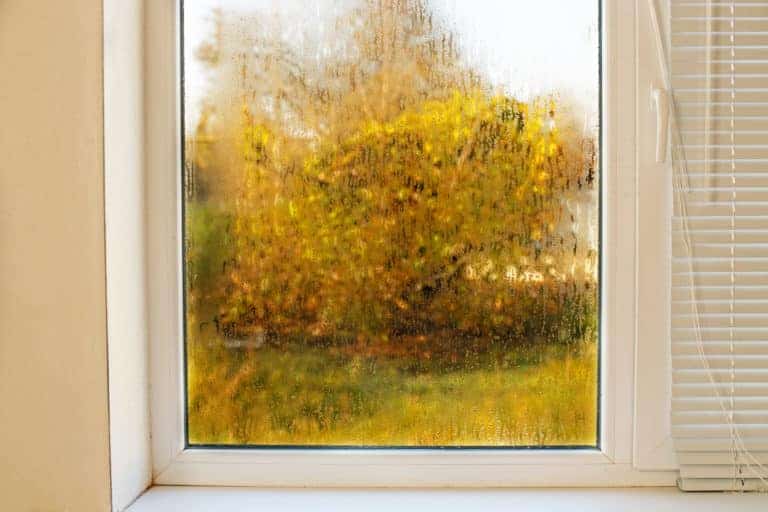When you’re watching TV in the evening or sipping your morning coffee with the daily newspaper in hand, you want to be able to actually enjoy these things. But with airplanes roaring overhead, the kids next door throwing yet another raging party, noisy traffic from your busy street, or any number of neighborhood annoyances, you might feel like the only way you’ll ever achieve peace and quiet is by moving to the middle of nowhere to escape the noise problem.
Don’t pack up just yet. Installing soundproof window glass to your home windows is a much easier solution.
A home upgrade like this won’t turn off the noise around you, but it’ll better keep it outside your exterior four walls, where it’s meant to be. Let’s run through the important details so you’re well equipped to make an informed choice when buying windows or replacing window glass.
What is Soundproof Glass?
Technically, soundproof glass is a bit of a misnomer, but “severely sound-reducing glass” doesn’t quite have the same ring to it. In reality, it’s practically impossible to soundproof a glass window fully, but with the right technology, you can significantly reduce the noise levels that pass through from outside.
So what are the actual mechanics of noise reduction windows?
At Glass Guru, we install a custom combination of laminated glass, which consists of three important components sealed together:
- A layer of regular glass
- A clear vinyl interlayer, usually made of an acoustic polyvinyl butyral (PVB) film
- Another layer of regular glass
A similar combination is found in car windshields, as it’s typically considered a safety-glazing material and will prevent the glass from shattering upon impact. Instead, you’ll see a spider web effect because the vinyl interlayer keeps the window glass in place.
How Soundproofing Works
With a virtually impenetrable barrier, the unwanted sound from outside—whether a barking dog, blasting stereo, or blaring fire truck—doesn’t make it through the several layers of glass to your living room.
Generally speaking, glass can only absorb and dilute a small range of sound frequencies, similar to its own vibrating frequency. All single glass panes have a critical frequency, a frequency at which they can’t quite absorb sound as well as they do at other pitches—basically, a weak point along the sound spectrum.
That’s why two are better than one when it comes to panes of glass.
For example, laminated glass with two sheets of 2mm-thick glass can better reduce high-frequency sound than a single 4mm-thick sheet. That’s because the PVB interlayer dissipates the sound vibration, which dampens and altogether eliminates the critical frequency effect—and a lot of the noises you’re used to hearing.
Most materials (vinyl interlayer included) are much better at blocking mid to high-frequencies; even soundproof glass won’t be able to block every pitch along the spectrum, especially low vibrations and deep, bass tones. Still, soundproof replacement windows can significantly reduce noise levels.
But by just how much?
Measuring Noise Levels by Sound Transmission Class (STC)
Claiming you have soundproofing windows is more than just a subjective assessment—like anything worth trusting, there’s a scientific, numerical ranking system to back up any claims of noise reduction and effectiveness.
In this case, it’s the Sound Transmission Class, or STC, which rates the level of sound isolation of a particular unit, material, or entire building assembly. A window’s STC is measured as its decibel (dB) reduction ability, or more simply, how much of the sound will be blocked—the higher the STC rating, the more effective the material.
The exact figure is determined by measuring a material’s ability to block or reduce airborne sound transfer at 16 unique frequencies within the typical range of speech, 125 to 4000 Hz.
This is important because the same material can better block some frequencies over others. For example, as you stand on one side of a wall and listen to what’s going on on the other side, you may experience the following variations:
- Low-frequency sounds – Registering at less than 500 Hz, you might hear barking dogs, the drip, drip, drip of a leaky faucet, a garbage truck, or a lawnmower outside, and the sounds j, ng, z, v, e, p, and others. At low frequencies, the transmission loss through a particular wall or window may only be a few dB, meaning if the sound were 80 dB in the source room, it would be 77 dB once it reached you. Anything less than a 3 dB change or so will be hardly perceptible.
- High-frequency sounds – Measured at 2,000 Hz or greater, this category includes birds chirping, the whistle of a tea kettle, or a traffic noise like a motorcycle whizzing by outside, as well as consonant, sounds like f, s, and th. Let’s say there’s a 25 dB transmission loss from one room to the next.
- Mid-frequency sounds – Encompassing the rest of the spectrum from 500 to 2000 Hz, these noises could be a crying baby, your son playing guitar with his garage band, a cell phone ringtone or alarm, or the letter sounds i, o, a, p, ch, sh, and so on. Maybe, in this case, you notice an average transmission loss of 10 dB.
It all depends on the type of noise and the barrier’s material.
To arrive at the eventual STC rating, you calculate the average transmission loss across all 16 frequencies between 125 and 4000 Hz, using a rather complex algorithm. There’s no exact one-to-one ratio between STC rating and dB reduction—an STC of 50 does not mean that the material blocks 50 dB or even 50% of the noise—but as mentioned, a higher STC score will be able to block more decibels.
How to choose windows that are right for you? If you consider the STC ratings of a standard window pane, you’ll quickly see how much of a difference acoustically engineered soundproof windows can make:
- Louvered windows – This style, made up of horizontal panels, has an average STC of 15-20. These windows are hardly effective, as even a normal conversation can be easily understood from inside your home with an STC rating between 15 and 25.
- Single-paned glass – A single layer of glass is only slightly more effective with an STC of 26-28. A rating between 25 and 35 is only marginally advantageous, as loud speech can still be easily understood and about half of normal speech volume.
- Soundproof windows – The Glass Guru’s soundproof windows have an STC in the high 40s and 50s, which is the threshold for substantial noise reduction. Between 45 and 55, loud speed may be faintly heard but hardly understood—nothing but a dull murmur somewhere in the distance. Above 55, even loud speech usually gets blocked out.
What are the Benefits?
Most of the time, when your home is noisy, that sound is coming through your doors and windows, not walls. Very seldom is there any real reason to make changes to your home’s exterior structure—the windows, however, are a whole other story.
When your window glass is the number one culprit, it’s the perfect place to start.
This is especially true if you have large window walls or picture windows, as your home is particularly vulnerable to the chirps, shouts, and alarms from the neighborhood around you. With soundproof windows, you’ll be able to enjoy:
- An effective sound barrier, virtually eliminating your current noise problems or else severely reducing them.
- The peace and quiet to enjoy your time at home without constant interruptions and nights kept awake.
- An enticing property market advantage when you eventually sell your home.
In addition to significant noise reduction, these specially engineered soundproof glass panes have other benefits for you as a homeowner:
- Blocking UV radiation – The vinyl interlayer in laminated glass acts as an effective barrier panel from harmful UV rays, protecting your furniture, carpets, and selves.
- Enhancing safety and security – Just like the windshield of your car, laminated glass is effectively shatter-proof because of the way the center vinyl holds the glass in place.
- Improving insulation – Thicker panes of glass can better keep the warm air in and the cold air out, or vice versa depending on the season. You’ll save energy and money with more insulating window glass.
Soundproofing windows is an investment, but one that will pay off ten-fold once they’re installed and for many years to come.
What is the Upgrade Process?
An entirely new set of windows sounds costly, time-consuming, and messy—the good news is that you don’t have to replace home windows at all, just the glass.
The Glass Guru’s installation process involves removing the existing glass in the window frame and substituting it for a laminated window pane with two layers of glass and that magical vinyl interlayer. In this case, you’ll enjoy the same sound insulation benefits without all the mess and madness of a major home renovation replacement window project.
Enjoy the Good Life, Noise-Free
You’ll never be able to block out all the external noise around you, even if you were to relocate away from everything and everyone. Besides, that wouldn’t make your day-to-day living very enjoyable.
Sources:
Thomasnet. Overview of Acoustic Materials. https://www.thomasnet.com/articles/plant-facility-equipment/overview-of-acoustical-materials/
Glass on Web. Acoustic properties of glass: not so simple. https://www.glassonweb.com/article/acoustic-properties-glass-not-so-simple
Fabric Structures in Architecture. Acoustics in architectural fabric structures. https://www.sciencedirect.com/topics/engineering/sound-transmission-class
Audimute. What is STC? https://www.audimute.com/stc-rating-calculator-how-to-determine-stc-rating-of-wall
STCratings.com. STCratings.com. https://stcratings.com/
Intermountain Healthcare. Hearing Tests. https://intermountainhealthcare.org/ckr-ext/Dcmnt?ncid=520408218
Certainteed. Noise Control for Buildings. https://www.certainteed.com/resources/30-29-121.pdf




